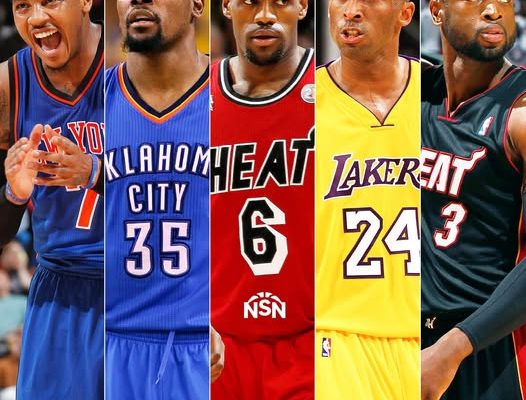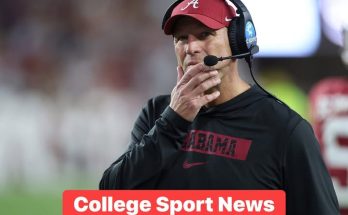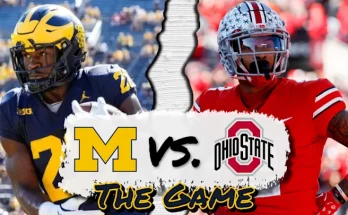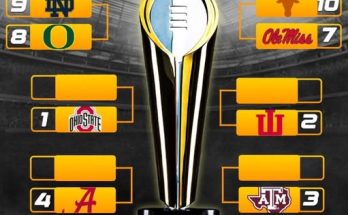The Indiana Pacers have just pulled off a move that could redefine their trajectory for years to come. In a move that’s already sending ripples across the NBA landscape, the Pacers have officially landed a replacement for longtime center Myles Turner — and the deal is causing quite the stir. The new addition is not only three years younger and significantly more efficient across nearly every statistical category, but also comes at a bargain price — nearly $100 million cheaper than Turner’s current contract. For a franchise that has long flirted with playoff relevance but fallen short of breaking through to contender status, this move signals a new era of calculated ambition and forward-thinking basketball philosophy.
Myles Turner, who has been a staple of the Pacers’ identity since being drafted 11th overall in 2015, was a defensive stalwart and a valuable stretch five. His shot-blocking prowess, rim protection, and ability to occasionally knock down the three made him a modern-day big in every sense of the word. However, despite his individual strengths, questions loomed for years about whether he was truly the centerpiece Indiana needed in the post. At times, he was overshadowed by flashier teammates, and at others, he was criticized for inconsistency or injuries that prevented him from hitting his full stride. Still, losing Turner wasn’t going to be easy — or so most believed.
What changes the game is who the Pacers got in return — and how much more value they’re extracting from this acquisition. The new center, whose name is rapidly gaining traction across social media and sports talk circles, brings a mix of youth, athleticism, and efficiency that may represent the perfect fit for the current construction of the Pacers’ roster. At just 24 years old, this big man not only fits the timeline of emerging stars like Tyrese Haliburton and Bennedict Mathurin, but also provides a style of play that meshes seamlessly with Indiana’s up-tempo, pass-first offense.
What makes this replacement so compelling is the raw numbers. In fewer minutes, the newcomer has already shown better per-36-minute production than Turner in points, rebounds, and field-goal percentage. He’s shooting over 60% from the field, showcasing elite finishing ability around the rim, a soft touch in pick-and-roll situations, and a knack for creating second-chance opportunities through relentless rebounding. Defensively, while Turner was known for his shot blocking, the new acquisition offers more switchability and lateral quickness, giving Indiana new defensive versatility in a league increasingly driven by spacing and speed.
And then there’s the contract — the part of this deal that truly separates it from being just another trade. While Turner had signed a hefty extension that pays him upward of $20 million annually, the Pacers’ new center is on a much more team-friendly deal. Reports indicate his three-year agreement is worth around $36 million in total — a fraction of what Turner commanded. That $100 million gap in financial commitment provides Indiana with invaluable flexibility, allowing them to retain and acquire other key pieces without being handcuffed by a bloated salary cap situation.
In many ways, this trade is a masterclass in organizational planning. Rather than holding on to Turner until his value plateaued or declined, the Pacers front office chose to sell relatively high and pivot toward a player who, though perhaps less experienced, offers greater long-term upside at a fraction of the cost. The move demonstrates not only shrewd fiscal strategy but also a sharp eye for talent evaluation. In today’s NBA, where matching skill sets to schemes is as vital as raw ability, the Pacers may have just found their unicorn.
Moreover, the psychological effect of this trade on the locker room can’t be overstated. Tyrese Haliburton, fresh off his All-NBA campaign, now has a pick-and-roll partner who thrives off movement and finishing in transition. With the speed at which Indiana likes to play, this new addition makes them more lethal in the open court, adding another layer to an offense that already ranked among the most efficient in the Eastern Conference last season. Pair that with Mathurin’s fearless slashing and Buddy Hield’s perimeter shooting, and the Pacers have a well-balanced, offensively potent unit.
Defensively, the replacement brings added mobility, allowing Indiana to switch more freely across positions without sacrificing rim protection. He may not be the classic rim deterrent that Turner was, but he more than compensates by being active in passing lanes, closing out on shooters, and keeping guards in front of him during perimeter switches. In today’s NBA, where bigs are constantly targeted in pick-and-rolls and isolation plays, this agility is arguably more valuable than shot-blocking numbers alone.
Additionally, the new center is a better free-throw shooter and foul manager than Turner, meaning he can stay on the floor in critical moments and remain a viable offensive threat in crunch time. Coaches around the league always prioritize closing lineups, and having a center who can contribute on both ends without being a liability at the stripe is a strategic advantage Indiana didn’t consistently enjoy with Turner.
Beyond the stat sheet, the new center also brings a fresh energy that’s already being felt across the organization. Coaches have praised his work ethic, humility, and team-first mentality — traits that echo the blue-collar identity Indiana has long been known for. He doesn’t demand the spotlight, but he elevates those around him. That kind of presence in the locker room, especially for a team still developing its identity, is invaluable.
Financially, the benefits of this deal are just beginning to unfold. With the nearly $100 million saved by replacing Turner, the Pacers can now explore adding a proven wing defender in free agency, or locking up their young core to long-term extensions without approaching luxury tax territory. It’s the kind of optionality that well-run franchises crave — the ability to build while staying competitive, all without mortgaging the future.
This move also sends a strong message to the rest of the Eastern Conference. The Pacers aren’t content with being a fun, young team anymore. They’re ready to compete. They’re willing to make bold decisions, even if that means parting with a long-standing franchise pillar like Turner. It speaks to a franchise that’s no longer just reactive to the marketplace but actively shaping its own path forward.
The ripple effects of this trade will be felt immediately. Indiana’s rotation is suddenly deeper, faster, and more cohesive. Fans who may have been skeptical at first are now buzzing with excitement at the potential of this revamped roster. And perhaps most importantly, the players themselves are buying in. With Haliburton taking the next step in his superstardom and the front office proving it’s serious about building a contender, this is a team that could make serious noise in the East as soon as this season.
It’s not easy to move on from someone as established and respected as Myles Turner. He was a consummate professional and gave everything to the franchise for nearly a decade. But in today’s NBA, sentiment can’t outweigh strategy. The Pacers’ willingness to pull the trigger on this deal is proof that they’re ready for the next chapter. And based on early returns, that chapter could be the most thrilling one yet.
As for Turner, there’s little doubt he’ll find a new home where his skills are appreciated and his leadership welcomed. He still has plenty left in the tank and could be a valuable contributor on a team looking for a veteran presence in the frontcourt. But for Indiana, the future has arrived — younger, cheaper, faster, and more efficient. The only question now is how high this retooled squad can climb.
One thing’s for certain: the Indiana Pacers just made one of the most strategic moves of the offseason, and the rest of the NBA would be wise to take notice.



